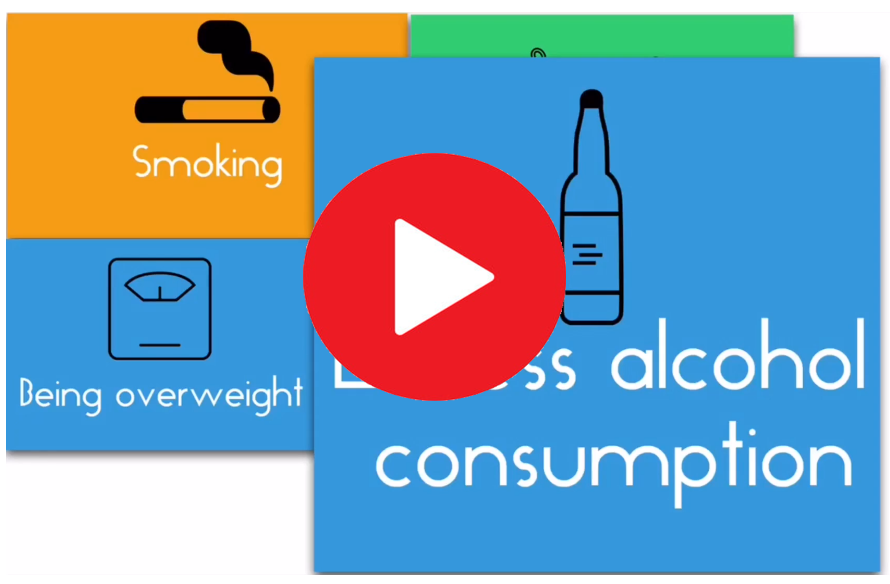The Bloodpressure Program™ By Christian Goodman The procedure is a very basic yet effective method to lessen the effects of high blood pressure. To some people, it sounds insane that just three workouts in a day can boost fitness levels and reduce blood pressure simultaneously. The knowledge and research gained in this blood pressure program were really impressive.
Choosing the Right Medication Based on Patient Profile
Choosing the right medication for a patient involves a detailed and individualized approach, as it is crucial to consider various factors related to the patient’s health status, medical history, lifestyle, and the pharmacological properties of the medication. Here is an overview of the process:
1. Patient’s Medical History
- Past and Current Diagnoses: Understanding the patient’s medical history, including chronic conditions (e.g., hypertension, diabetes), previous surgeries, and current symptoms, is essential in selecting a medication that won’t exacerbate existing conditions.
- Medication History: Knowledge of past and current medications helps in identifying potential drug interactions, resistance, or allergies. It also helps avoid re-prescribing drugs that have been ineffective or caused adverse effects in the past.
- Family History: A family history of specific diseases may influence medication choices, especially in conditions with genetic predispositions.
2. Patient’s Physical Condition
- Age: Pediatric and geriatric patients often require different dosages and formulations. For example, elderly patients may have reduced renal function, necessitating dosage adjustments to avoid toxicity.
- Weight and Body Mass Index (BMI): Dosages of certain medications, such as chemotherapy drugs, are often weight-based. Obesity can also affect the pharmacokinetics of drugs.
- Organ Function: Renal and hepatic function are critical in drug metabolism and excretion. Impaired kidney or liver function may require dose adjustments or alternative medications.
- Pregnancy and Lactation: Special considerations are needed for pregnant or breastfeeding women to avoid teratogenic effects or harm to the infant.
3. Patient’s Lifestyle and Preferences
- Dietary Habits: Certain foods can interact with medications (e.g., grapefruit juice with statins). A patient’s diet should be considered when prescribing drugs.
- Smoking and Alcohol Use: Smoking can induce liver enzymes that metabolize drugs, while alcohol can interact with many medications, affecting their efficacy and safety.
- Occupation and Daily Activities: Medications that cause drowsiness or require frequent dosing might not be suitable for patients with certain occupations or lifestyles.
4. Pharmacological Considerations
- Mechanism of Action: Understanding how a drug works can guide its selection, particularly when treating conditions with multiple therapeutic options.
- Pharmacokinetics and Pharmacodynamics: These include the drug’s absorption, distribution, metabolism, and excretion (ADME), as well as its onset of action, peak effect, and duration. These factors help in choosing the right dosage form and regimen.
- Side Effect Profile: The likelihood and severity of side effects are weighed against the benefits of the medication. Some patients might tolerate certain side effects better than others, or they might have conditions that make them more susceptible to specific adverse effects.
5. Drug Interactions and Polypharmacy
- Drug-Drug Interactions: Many patients, especially the elderly, may be on multiple medications, increasing the risk of drug-drug interactions that can alter the effectiveness or safety of a medication.
- Drug-Food Interactions: As mentioned earlier, certain foods can affect drug metabolism. For example, Vitamin K-rich foods can interfere with warfarin.
- Drug-Herb Interactions: Herbal supplements can also interact with prescribed medications. For instance, St. John’s Wort can reduce the effectiveness of oral contraceptives.
6. Patient Adherence and Compliance
- Ease of Use: Medications with simpler dosing schedules (e.g., once daily) tend to have higher compliance rates.
- Formulation Preferences: Some patients may prefer certain forms of medication (e.g., liquid, tablet, patch), which can influence adherence.
- Cost: The affordability of medication is a significant factor in ensuring patient compliance. Generic options or formulary alternatives may be considered.
7. Patient-Specific Factors
- Genetic Factors: Pharmacogenomics can guide drug selection, especially for medications with known genetic implications (e.g., warfarin, clopidogrel).
- Psychosocial Factors: Mental health, cognitive function, and support systems can influence a patient’s ability to adhere to medication regimens.
8. Clinical Guidelines and Evidence-Based Medicine
- Standard Treatment Protocols: Guidelines from professional organizations provide evidence-based recommendations that should be tailored to the individual patient.
- Clinical Trials and Research: The latest research can offer insights into new medications or changes in the standard of care, but the patient’s unique profile should always be the primary consideration.
9. Monitoring and Follow-Up
- Regular Monitoring: Blood tests, imaging, and clinical assessments are often required to monitor the efficacy and safety of the medication, allowing for timely adjustments.
- Patient Feedback: Continuous communication with the patient regarding their experience with the medication is crucial for optimizing treatment.
Conclusion
The process of selecting the right medication is complex and patient-specific. It requires a thorough understanding of the patient’s medical background, lifestyle, and preferences, along with a detailed knowledge of the pharmacological properties of potential treatments. Collaboration with other healthcare providers and the patient themselves is essential in achieving the best therapeutic outcomes.

The Bloodpressure Program™ By Christian Goodman The procedure is a very basic yet effective method to lessen the effects of high blood pressure. To some people, it sounds insane that just three workouts in a day can boost fitness levels and reduce blood pressure simultaneously. The knowledge and research gained in this blood pressure program were really impressive.
